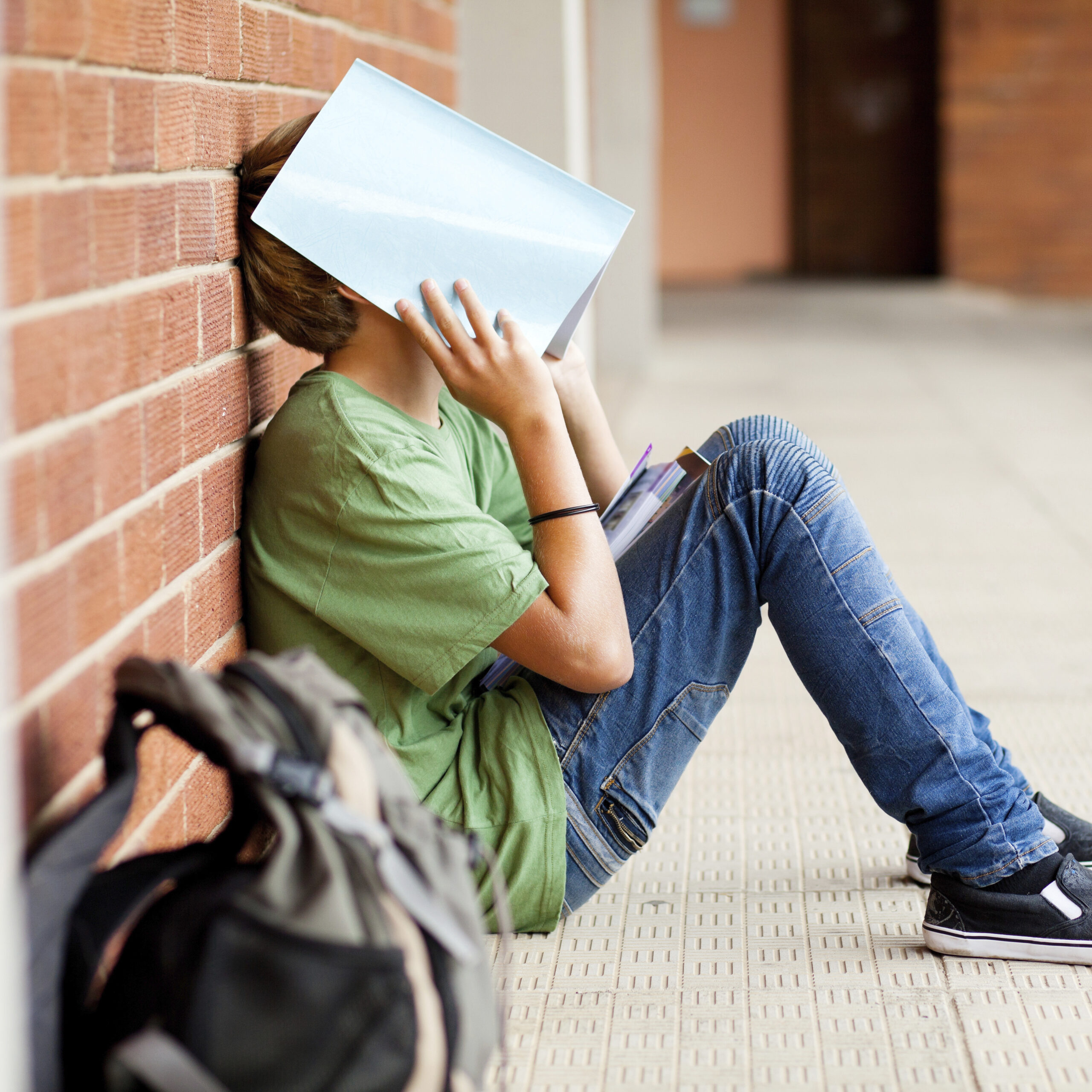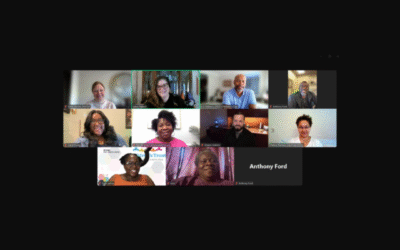As a child and family therapist, I have worked with children who deal with all kinds of different mental health needs, including anxiety, depression, trauma and neurodivergence. However, the aspect of mental health that often scares people, both parents and sometimes clinicians, is self-harming and suicidal ideation.
Let’s break down some important points I believe all parents should know.
Suicide and Self-Harm Are Different
Suicide is in the popular vernacular often, and there has been more awareness raised about youth with suicidal ideation. Self-harming, on the other hand, I have found to be more misunderstood and hard for people to understand, specifically when it comes to children.
Self-harming, in the clinical world, is sometimes referred to as NSSI, meaning non-suicidal self-injury. This typically means that the individual is hurting themselves, typically with cutting or burning, as a “coping mechanism” rather than with the intent to ultimately end their life.
Know What to Look For
The mechanisms and body placements with which individuals choose to harm themselves can vary greatly, but using razor blades to cut thighs and forearms is common. This is important to know as a caregiver of someone who self-harms, because it is important to know what to look for. Often, kids who self-harm will try to cover their scars with long sleeves or pants when it seems way too hot to wear these articles of clothing, which is a warning sign to look out for.
Be Compassionate and Understanding
The reasons that kids will hurt themselves can vary, but it often is a way to cope with overwhelming emotions. If you have never personally experienced this before, it is very hard to understand and wrap your mind around. However, even if you do not understand it, the most important thing to remember is that any child who hurts themselves needs compassion and acceptance, not judgement.
Parents will often say “They have nothing to worry about, they’re a kid! What do they possibly have to be upset about? Their life is so easy!”
This response is significantly invalidating to your child and will almost certainly make their feelings more intense and their self-harming worse. It can be helpful to put yourself in their shoes in order to first understand how it can feel to be 12 again and feel like no one understands you, likes you, and you don’t even like yourself.
Kids Need Help Managing Stress
When you are in your 30s or 40s and dealing with bills, paying rent, going to work and daily adult stressors, it is hard to remember what it was like for you in middle school. The stressors kids face every day are definitely different than the concrete ones that adult face, but they are just as difficult.
Actually, they probably are even more difficult because their brains aren’t fully developed yet and they are not designed to cope or calm their nervous system down alone. Children have to depend on the adults in their life to create safe, caring, stable environments for them to learn how to do this.
Adults, on the other hand, have more autonomy and can decide to go to therapy or a support group on their own. Kids cannot survive, heal or thrive on their own—they need adults to help them do so. While some adults wish they could rely on someone else to do this for them, this can be not only frustrating for kids as they grow up, but also sometimes feels impossible if they do not have stable, caring adults or environments in their life due to trauma.
Just remember: They’ve only been on this planet for 10-15 years! Cut them some slack.
Understand Why Kids Hurt Themselves
The first part of understanding self-harm is just understanding kids’ heightened emotions and how difficult it is to experience these things and not know what to do with them. When a child experiences rage, fear, extreme joy or anxiety for the first time or chronically, it can feel incredibly overwhelming and all-consuming.
Many adults feel this way and do not know how to identify, communicate or regulate their emotions when they feel extreme feelings either. Therefore, if a child’s caregivers do not know how to regulate their own emotions or model this for them, how in the world is a child supposed to learn how to do this in a healthy way?
Too often, parents forget that this is their job and expect their kids to be able to handle big emotions on their own. If they are not modeled or taught skills on how to do this from the adults in their life, kids will often turn to unhealthy coping mechanisms to feel “better.” This can look like externalizing behaviors like throwing things, hitting peers, yelling, tantrums or more internalizing behaviors like suicidal ideation or self-harm.
The second aspect of understanding why your child might be self-harming is completely biological. The act of self-harming can actually cause the same kind of response from our bodies that drugs or working out can give us.
Serotonin, endorphins and dopamine get released when we do any of those things. Serotonin calms us down, endorphins help us not to feel pain and dopamine helps us feel pleasure. (This article from the Taylor Counseling Group goes into detail and has a great diagram about what happens in our brains when we self-harm.)
When you look at it like that, no wonder people self-harm! Not only does it temporarily help with your emotional pain and provide distraction, but it also produces a kind of “high” that is similar to taking drugs or working out.
Understanding why kids self-harm is the first step to helping them stop. Because, if you have ever noticed, just telling someone to “stop it” almost never stops the behavior.
What the Data Shows
One of the biggest barriers to kids reaching out for help when they are self-harming is that they feel like they’re the “only one” and no one will understand them. Therefore, knowing the prevalence of self-harm can be helpful.
About 17% of people self-harm during their lifetime, and the average age of the first incident is 13, according to an article by The Recovery Village. Adolescents have the highest rate of self-harming behaviors, with about 17% admitting to self-harming at least once.
It is also important to note that these statistics are often from self-reports or people who actually reached out for help. Many kids will grow up doing this in the shadows and never tell anyone, so the statistics are likely much higher than reported.
Other statistics to note include that girls are more likely to self-harm than boys, and their methods are typically different due to the way they were taught to deal with emotions. Boys are socialized to externalize their behaviors into anger, which often looks like hitting themselves or others, while girls are taught to internalize their emotions, which typically manifests as cutting or burning themselves. In addition, kids who identify as part of the LGBTQIA+ community are at a significantly higher risk of self-injury due to the bullying and discrimination they often face.
How to Get Help in South Carolina
In South Carolina specifically, it is helpful to know the resources available for kids who are self-harming. Often, people think about crisis resources or suicide hotlines as only available for people experiencing suicidal ideation. However, just because it is a “suicide hotline” does not mean you can’t also use it if you are in crisis and want to self-harm. They are not going to turn you away because your crisis is different than someone else’s.
988SC is a South Carolina-specific crisis hotline. What’s cool about it that I always share with teens is that it has a text line and an online chat function as well, so you don’t have to call if that is scary or too overwhelming for kids.
Another fear that kids might have about contacting a crisis hotline is whether or not their parents will find out, or the police will find out. Counselors on a crisis hotline must adhere to the same ethics code and confidentiality standards as counselors in an office setting. This means that the only reason parents or authorities would have to be contacted is if the person calling is in immediate danger and needs hospitalization, or if a child or elder is being abused or neglected and a report with the state Department of Social Services needs to be made. Otherwise, everything that you say to a crisis counselor stays confidential.
Please Remember
The first step in helping support your child who is self-harming is to understand and validate their emotions while keeping them safe. If you believe your child is in immediate danger, call 911 or go to your nearest emergency room.
Teal Russeau is a Licensed Clinical Mental Health Counselor in North Carolina. Teal currently works as a school-based therapist for children and families ages 5-18 in Brevard, North Carolina.





